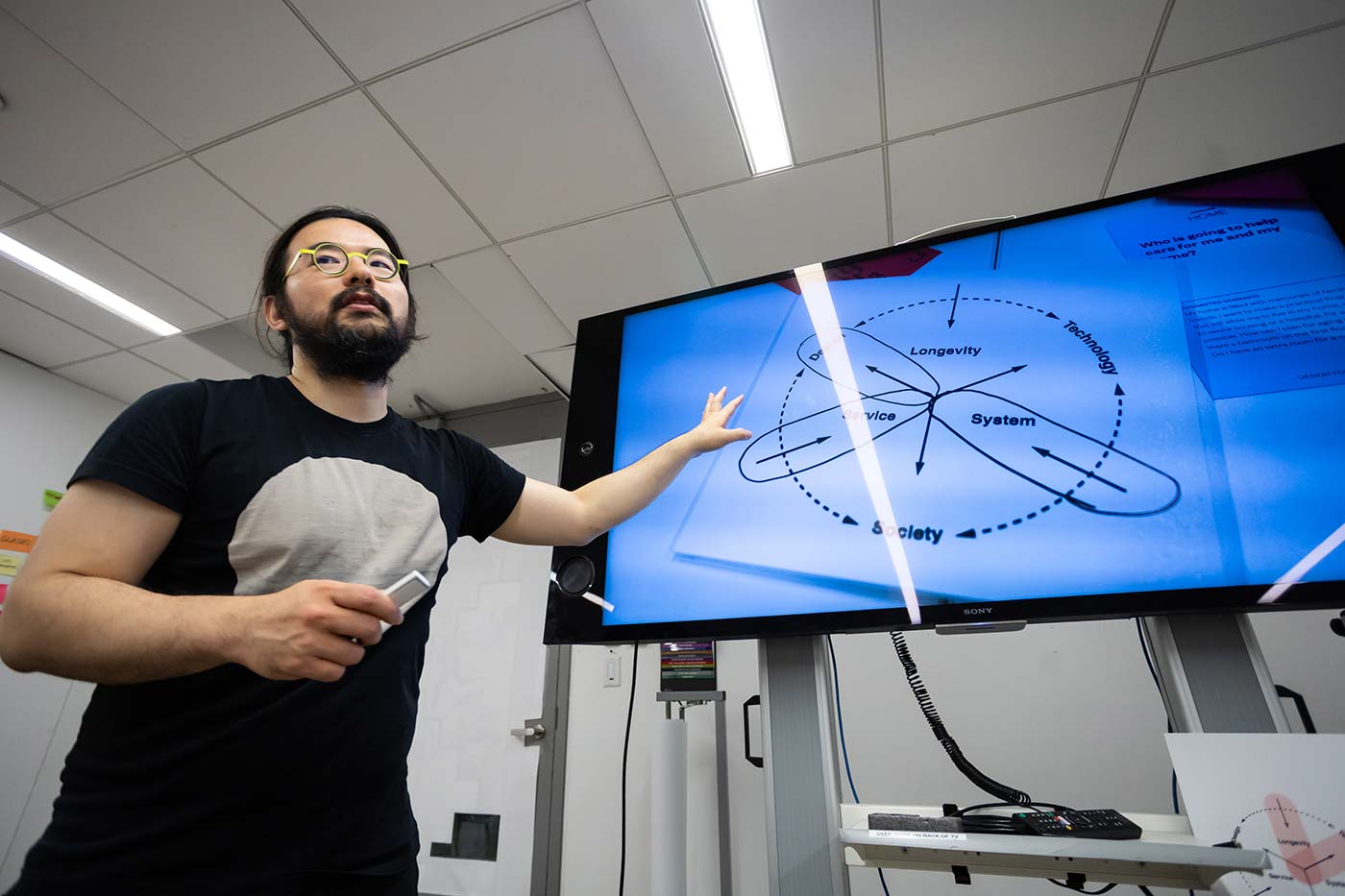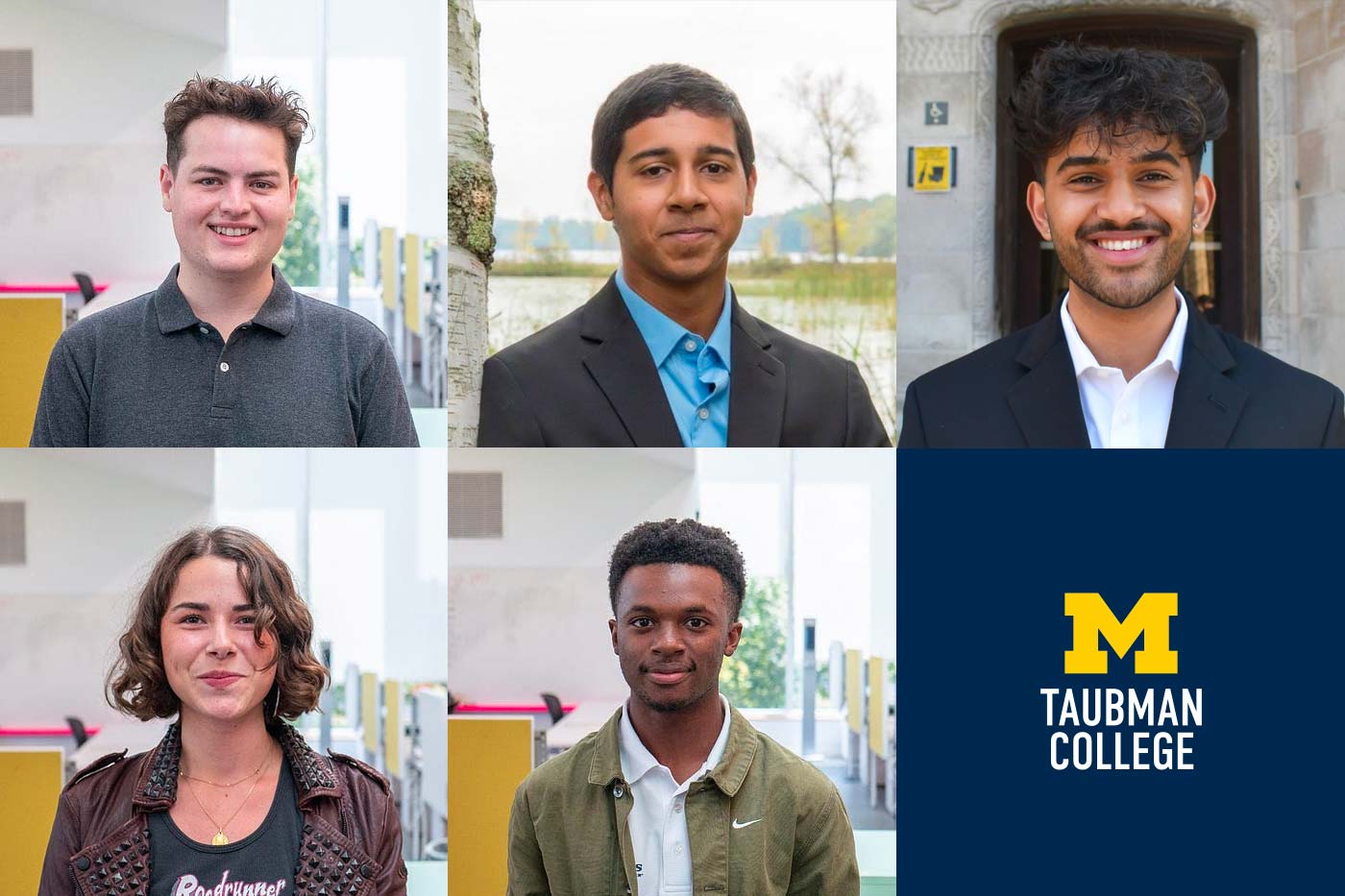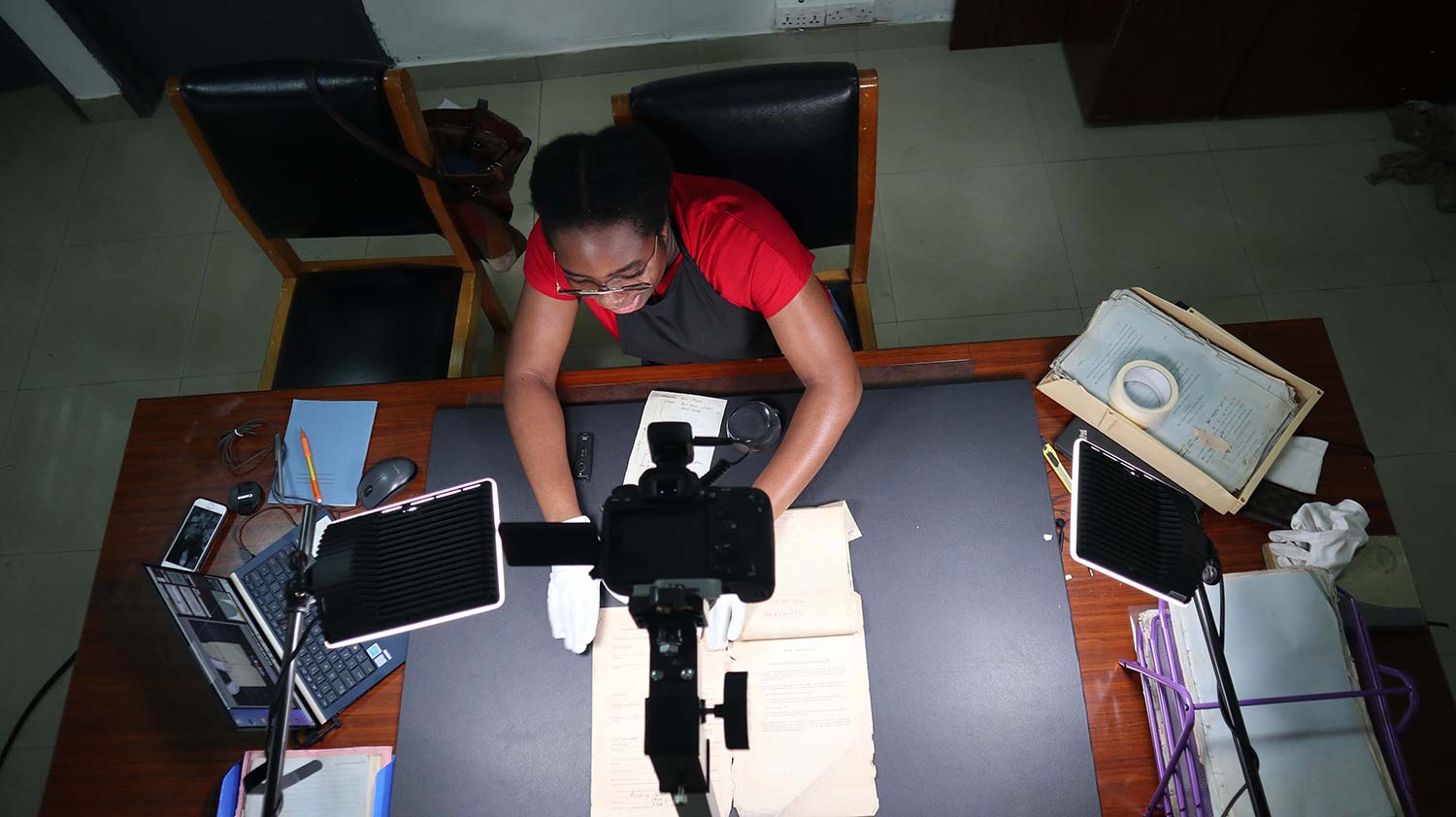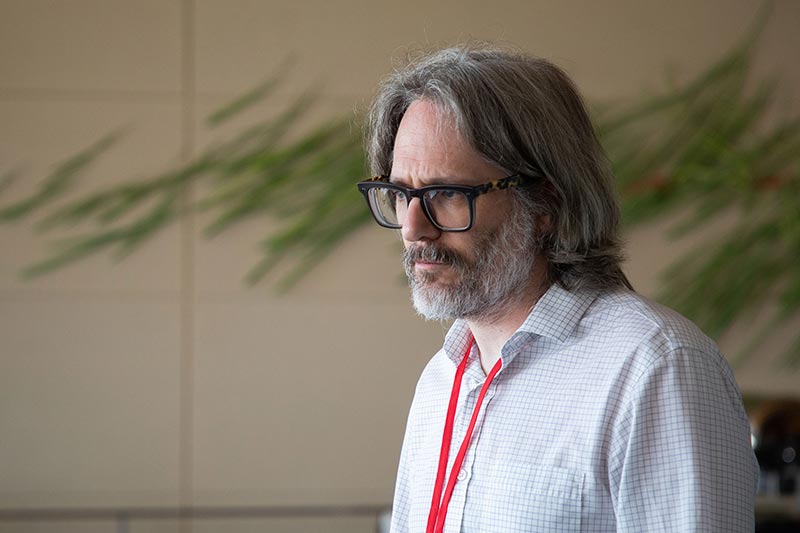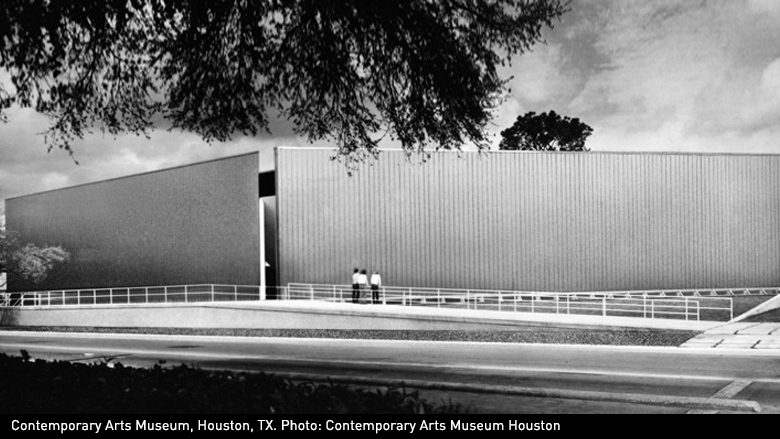
Remembering Architect Gunnar Birkerts, Professor Emeritus (1925-2017)
Remembering Architect Gunnar Birkerts, Professor Emeritus (1925-2017)
Taubman College professor emeritus and architect, Gunnar Birkerts, died on August 15, 2017 at his home in Needham, MA at the age of 92. Birkerts is an important part of Taubman College’s legacy and was a professor at the college from 1959 – 1990. His work pushed the boundaries of modernism through his uses of light and angular forms and can be found across U-M’s Campus and across the world. Some highlights include the U-M Law Library Addition, Ann Arbor, MI; GM Tech Center, Warren, MI; Federal Reserve Bank, Minneapolis, MN; Corning Glass Museum, Corning, NY; Contemporary Arts Museum, Houston, TX; and the National Library of Latvia, Riga.
Birkerts “Gave Shape to the Unexpected.” A full feature can be found in the NY Times, August 17, 2017:
Gunnar Birkerts, a Latvian-born architect who extended the vocabulary of Modernism using unexpected angular forms, folding planes and ingenious, light-suffused interiors, died on Tuesday at his home in Needham, Mass. He was 92.
His son, the literary critic Sven Birkerts, confirmed the death.
Mr. Birkerts absorbed the lessons of the Bauhaus while studying in Germany immediately after World War II, finding inspiration in the Scandinavian architects Eero Saarinen and Alvar Aalto. He had encountered their work while reading architectural journals in the library of the United States Information Agency.
After emigrating to the United States in 1949, he worked with Mr. Saarinen at his offices in Birmingham, Mich., near Detroit, and later with Minoru Yamasaki, a leading practitioner of the style known as New Formalism. He started his own firm, Gunnar Birkerts & Associates, in Birmingham in 1963.
Mr. Birkerts designed dozens of buildings, many of them in and around Detroit, typified by “bold forms, space before structure, minimal detailing, stratified walls and daylight in interior spaces,” the architecture critic Kay Kaiser wrote in “The Architecture of Gunnar Birkerts” (1989).
Projects like the austere corrugated-metal Contemporary Arts Museum in Houston (1972), which the architect Bill Stern called “as honest a building as I’ve ever seen,” and the Federal Reserve Bank in Minneapolis (1973), hung from curving cables like a suspension bridge, established him as an innovative interpreter of the high Modernist style.
For the University of Michigan’s law library, Mr. Birkerts created an underground addition, completed in 1981, that used elaborately refracted light for illumination. A V-shaped glass moat reflected the original building, whose Gothic tower could be seen from 56 feet below ground level.
A year earlier, he had completed a building to house the collections of the Corning Museum of Glass. His “linear periscope,” as he called it, used textured glass panels backed by stainless steel in a graceful serpentine structure. Wolf Von Eckardt, in The Washington Post, called the design “simple and eminently to the point.”
The new museum, he added, “has the sensible beauty of a hand-cut crystal tumbler.”
In 2006, the Institute of American Architects gave Mr. Birkerts its Twenty-five Year Award to honor the museum’s enduring significance.
His final building, the Latvian National Library in Riga, also known as the Castle of Light, may have been his greatest triumph. Commissioned in the late 1980s and completed in 2014, it was a labor of love and a cultural focal point for a country finding its feet after decades of Soviet domination. Its mountainlike mass, topped with a glass pyramid, was inspired by a Latvian folk tale about the Castle of Light, representing wisdom, and the Glass Mountain, on which a sleeping princess, symbol of freedom, slept.
The American Institute of Architects, awarding Mr. Birkerts its Library Building Award in 2017, called the library “a contemporary Modernist masterpiece.” The architect Will Bruder, chairman of the prize jury, said: “He plays with metaphor, poetry and an understanding of his native Riga. It’s heroic, allegorical, and contains a power and conviction about its space.”
Gunnar Gunivaldis Birkerts was born on Jan. 17, 1925, in Riga, the capital of what was then independent Latvia. His parents, Peteris Birkerts and the former Merija Shop, were folklorists who separated before he was born.
At 13, Gunnar saw an older classmate’s architectural rendering of a gas station and decided then and there on his vocation. Fleeing Latvia ahead of the advancing Soviet Army at the end of World War II, he made his way to Germany and enrolled in Stuttgart’s technical university, where he earned diplomas in engineering and architecture.
Sponsored by Sylvia Zvirbulis, a fellow Latvian he had met in Germany, Mr. Birkerts moved to the United States and immediately sought out Mr. Saarinen at his offices in Birmingham, Mich., hoping for a job. Unfortunately, Mr. Saarinen’s biggest project, the General Motors Technical Center, had been delayed, but he sent Mr. Birkerts with a letter of recommendation to the Chicago firm Perkins & Will, which specialized in school architecture. (It is now known as Perkins + Will, with offices throughout the United States and in several countries.)
In 1950 Mr. Birkerts married Ms. Zvirbulis, who survives him. In addition to his son Sven, he is also survived by another son, Erik; a daughter, Andra Birkerts-Footer; and seven grandchildren.
After two years with Perkins & Will, Mr. Birkerts joined Mr. Saarinen’s firm, where his colleagues included such future stars as César Pelli, Kevin Roche, Robert Venturi and Charles Bassett. He worked on the General Motors Technical Center in Warren, Mich., and Concordia Senior College in Fort Wayne, Ind., and was the project architect for the Milwaukee County War Memorial. He also won several awards for his furniture design.
Mr. Birkerts was invited to join the firm Yamasaki, Leinweber & Associates in Birmingham in 1956. For Mr. Yamasaki, the future designer of the World Trade Center, he served as chief designer for the Reynolds Metals Building in Southfield, Mich., the Educational Building at Wayne State University in Detroit and the Dhahran Air Terminal in eastern Saudi Arabia.
In 1959, Mr. Birkerts and his colleague Frank Straub formed their own firm, Birkerts & Straub. With Mr. Straub acting as project administrator, Mr. Birkerts designed several projects under the firm’s name, notably the Marathon Oil building in Detroit, before leaving to start Birkerts & Associates in Birmingham in 1963. The firm relocated to Wellesley, Mass., in 2007.
Birkerts & Associates’ many projects in the 1960s included the University Reformed Church (1964) in Ann Arbor, Mich.; the South Wing addition to the Detroit Institute of Arts (1964); the Fisher Administrative Center (1966) at the University of Detroit; and the Lincoln Elementary School (1967) in Columbus, Ind.
Mr. Birkerts later designed the dance building at the State University of New York at Purchase (1970), the Duluth Public Library (1980) and the American embassy in Caracas (1992).
Mr. Birkerts, who taught architecture at the University of Michigan from 1959 to 1990, was the author of “Subterranean Urban Systems” (1974), “Gunnar Birkerts: Buildings, Projects, and Thoughts, 1960-1985” (1985) and “Process and Expression in Architectural Form” (1994).
In 1981, the American Institute of Arts and Letters awarded him its Arnold W. Brunner Memorial Prize in Architecture.





